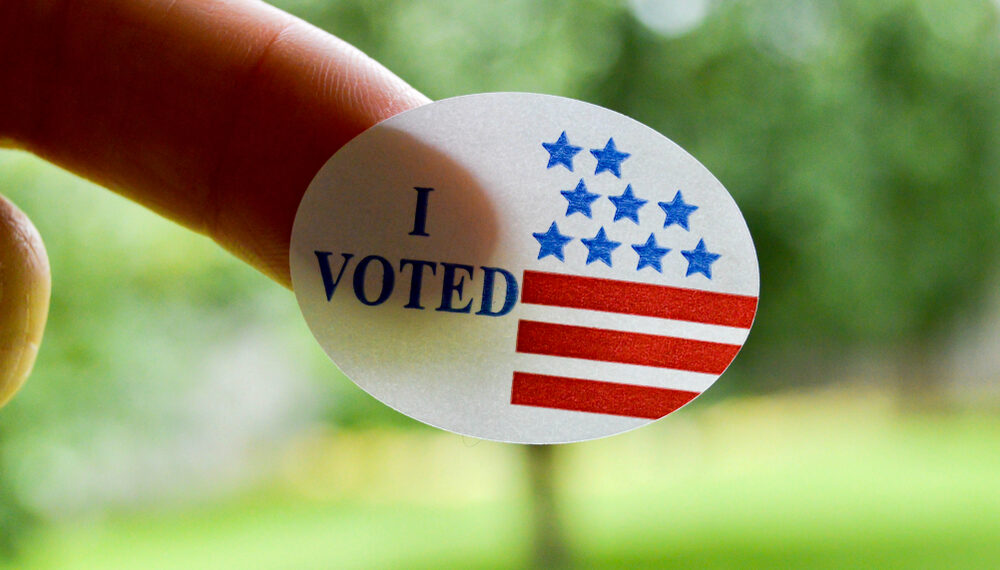Summary:
- Between 1934 and 2018, midterm elections have not been kind to candidates sharing the same party as the President – on average, these races see losses of 28 House seats and four Senate seats.
- While the Senate looks like a coin-flip and the House could shift more red, the good news is that crypto has bipartisan support – officials want to keep the US a tech leader.
- Data shows the crypto votes matter, 4 in 5 say a politician’s position on crypto could affect how they vote.
- Crypto needs a two-step strategy for the lame duck session and the 2023 reset.

As Americans head to the polls and determine the makeup of the next Congress, it’s important to note that these midterm elections will impact the crypto industry. Here are three things crypto should know about midterms.
1. Flips and New Allies
A bit of history. Between 1934 and 2018, midterm elections have not been kind to candidates sharing the same party as the President. On average, these races see losses of 28 House seats and four Senate seats.
History also shows that the freshman class will bring their unique perspectives to legislating and new coalitions will emerge. Up to 60 new members will join the House in 2023 as freshman, and, even if the Senate remains 50/50 with Democratic control, almost 10% of the Senators on the Republican side of the aisle could be new. While the Senate looks like a coin-flip and the House could shift more red, the good news is that crypto has bipartisan support. Leaders on both sides of the aisle want to ensure the US keeps its top tech spot.
With the high number of new members in both chambers, there most certainly will be a learning curve in governing as both sides of the aisle adjust to their new roles.
The House will likely have a powerful member with strong opinions on the industry in Congressman McHenry, ready to step in on day one. Crypto will be losing a respected champion in Senator Toomey. When it comes to state races, don’t be surprised on election night if we see a blue state governor (or two) who find themselves in trouble – if not on the wrong side of victory.
2. Data shows us that crypto votes can matter in narrow races
This election promises some of the most competitive races in a generation, with many races likely to be decided by narrow margins. The crypto community is ready to make its voice heard in November – those candidates that listen will get their vote. Some 4 in 5 say a politician’s position on crypto could affect how they vote. About 1 in 2 think that crypto needs more regulation than presently exists and want legislators to treat crypto as a serious and valid part of the economy.
While it is early days and there are many important issues on the minds of voters across the country, crypto’s potential is an issue. Congress is a critical component to ensuring consistency and clarity in the digital future and the data shows us that people want action. Working together, it’s possible for the US to build more pathways to spur meaningful economic growth, and secure a digital future where crypto’s full potential is realized through careful conversation and smart policy.
3. Crypto needs a two-step strategy for the lame duck session and the 2023 reset
There are many boxes to be ticked for any bill to move through a lame duck. While there is definitely a possibility crypto is addressed, having a two-step strategy will ensure we continue to move forward together.
The 2023 reset requires a whole new set of coalitions to be drawn and champions to be activated. This uncertainty may also be amplified by the growing likelihood that we have a runoff in Georgia (this time it will only run through December 5th) which would have a massive impact on what gets achieved post-election day. There is also talk of trying to take the debt ceiling off the table, which will consume high amounts of time – taking the debt ceiling off the table would help the new House majority in January focus on other priorities.
Against this backdrop, the crypto community (from builders, to think tanks and trade associations to crypto activists) needs to ensure that there is a large group driving the immediate policy needs of crypto through the end of the Congress, while also working to put into place the elements necessary to pivot to the new Congress if legislation is not passed in the lame duck. Q1 2023 will kick off a flurry of activity given there will be at least 60+ new members of the House and Senate who need to understand that crypto is a priority in D.C. and back at home.




